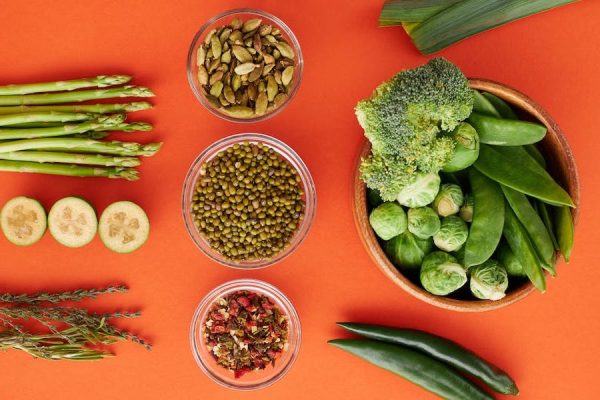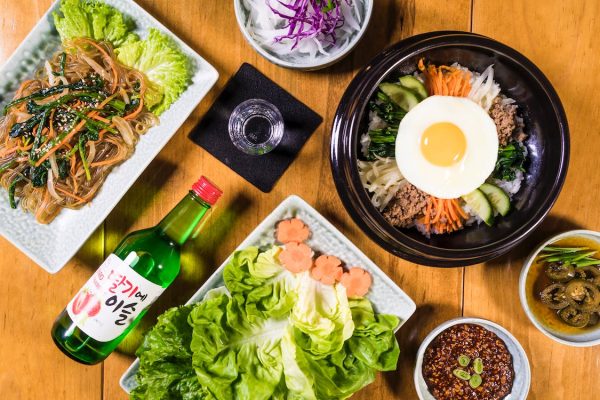Food innovation often starts with food trends. Understanding how our way of eating and producing food is changing is central in the ongoing food trend research by Food By Design. Each year, we share some food trends as a sneak peek. So here they are, our five food trends for 2024. If you’re curious about the full story tailored to your product, segment or market, please don’t hesitate to get in touch with us.
Food Trend #1 The future of plant based proteins
After a meteoric rise in the “meat replacer” category, we are now witnessing a plateau in growth. However, we firmly believe that this is far from the end of the road for this category; instead, it marks the beginning of a new generation of meat substitutes. This pattern is common with new technologies and innovations and is known as the Gartner Hype Cycle. Currently, we are in the “trough of disillusionment,” but we anticipate a resurgence in growth, ultimately leading to success and the emergence of clear winners.
New plant-based proteins, which we deliberately avoid calling “meat replacers,” will overcome key barriers such as price, taste, and excessive processing. The strategy of mimicking meat one-to-one will diminish in importance, with a focus shifting towards the richness of edible flora. Recipes will be crafted from plant-based whole foods rather than isolates and concentrates. Recognizable ingredients such as vegetables, fruits, grains, seeds, legumes, herbs, spices, seaweed, mosses, mushrooms (technically not plants), and blossoms will take center stage.
Simultaneously, the replication of meat will enter a new phase, with the emergence of “super-mimickers” mimicking more special meats and seafood like bacon, scallops, premium whole-cuts, foie gras, and sashimi with great detail. Ingredient suppliers are also not standing still; they are introducing more designer ingredients to replicate the perfect animal fat marbling or the iron-rich taste of blood with remarkable precision.
Do you have special interest in plant based innovation? … then ask us about our ‘plant future’ presentation that unveils the latest technologies, food designs, forward flavours, plant psychology, consumer insights and chef’s delights’.

The new plant-based proteins will overcome key barriers such as a disappointing taste and excessive processing
Food Trend #2 AI-Generated Food Design and Recipes
This year, AI has broken through and became accessible to a wide audience. The international pizza chain, Dodo Pizza, had its latest pizza variant designed by Chat GPT for its Dubai branch, resulting in a new pizza featuring paneer, tahini, and za’atar spice mix. Instagram blogger Ghislaine from Veggilaine also asked Chat to create a recipe in her style, and Chat delivered a recipe for paratha filled with spiced potatoes in just 3 seconds. This easy-to-make dish was well-received by the blogger and aligned with her philosophy of delicious and easy-to-prepare food. We too have been experimenting this year; for a bakery congress, we asked Chat GPT to design a cake inspired by the Bossche Bol, a local delicacy from ‘s-Hertogenbosch. Within seconds, the Bossche Bollicious tart was presented to us, which we then had visualized by image generator Ideogram.

The AI generated Bossche Bollicious tart. The name and recipe were generated by Chat GPT and the image visualized by image generator Ideogram.
Food Trend #3 Spicology
Spices and herbs typically make up only 1-2% of a dish, yet they can define its identity turning the same eggplant into a distinctly Italian, Indian, or Lebanese creation. They set the tone, the zeal of the meal! This is understood well by Simply Cook, the startup acquired by Nestlé. Instead of shipping large boxes of food, they deliver small mailbox packages containing spices, herbs, and recipes for 3-4 meals. Claiming the essence of the dish. As vegetable preparations become more important, we see a shift towards blends specifically suited for this purpose, such as Magic Spice from the Californian vegetable restaurant Botanica, which imparts enchantment to every vegetable dish.
Trending spices and blends in 2024 include Aleppo pepper (constantly sold out), umami boosters with seaweed and mushrooms, smoky flavors, and African spices like tangy berbere, chakalaka, and iru (fermented locust beans).

Spices pave the way to our future taste
Food Trend #4 K-Food Goes Mainstream
It’s been on the horizon for a while, but now it’s truly breaking through – K-food is here! The innovative and spicy Korean cuisine has become an integral part of our favorite global culinary palette. Beyond South Korea, we now find restaurants, fast-food chains, and supermarkets in cities like Paris, London, Amsterdam, New York, and more. Bulgogi, Bibimbap, and the beloved Korean fried chicken are becoming increasingly popular. In the coming years, we expect their popularity to soar, with new Korean classics like tteokbokki (rice cakes) and japchae (sweet potato noodles) becoming more mainstream. Additionally, there’s special attention on the relatively new Korean bakery and pastry culture. For example, Korean pastry chef Narae Kim at the Hyatt in Paris creates beautiful desserts that seamlessly blend Korean and French flavors, such as a dessert featuring slices of European Williams pear in au de vie and Asian Nashi pear marinated in jasmine tea and bergamot oil.

K-Food is becoming mainstream
Food trend #5 Affordable, yet wealthy cuisine
In the face of soaring energy prices and inflation, the cost of living has escalated. Consequently, consumers are tightening their purse strings and becoming more conscientious in their grocery shopping. However, this emphasis on affordability doesn’t imply a sole focus on cheap, cheap, and cheap. On the contrary, we observe that consumers strive to feel as affluent as possible during these financially challenging times. Food concepts centered around ‘affordable luxury’ are gaining popularity. It’s no coincidence that Lidl’s festive brand Deluxe (formerly Delicieux) boasts an impressive 80% brand awareness in the Netherlands.
An intriguing sub-trend we identify is ‘Budget Green,’ where thriftiness and sustainability converge. Who said being eco-conscious had to break the bank? By cutting back on meat, fish and cheese consumption, minimizing food waste, and crafting delightful dishes from leftovers, substantial savings can be achieved. This applies not only to consumers but also to manufacturers who typically incorporate these elements into ready-made products. Simultaneously, consumers can still experience a sense of ‘mental wealth’ by contributing to a better planet
In this light we took note of the popular food blog and community ‘food52’ and their New Year’s resolution to ‘eat more beans’. This simple and elegant idea has captured our imaginations, and we’re wholeheartedly embracing this deliciously inspiring resolution for 2024! Do you too?
Do you like to hear the full trend story? … then please contact us. We are happy to help explore your food future. Even more important, to help you translate these trends into it new, successful food innovations and brands relevant for your customers and consumers.
Photo credits Pexels & Unplash: Vanessa Loring, Becerra Govea Photo, Andrea Leon
Tart image is visualized by Midjourney
